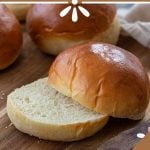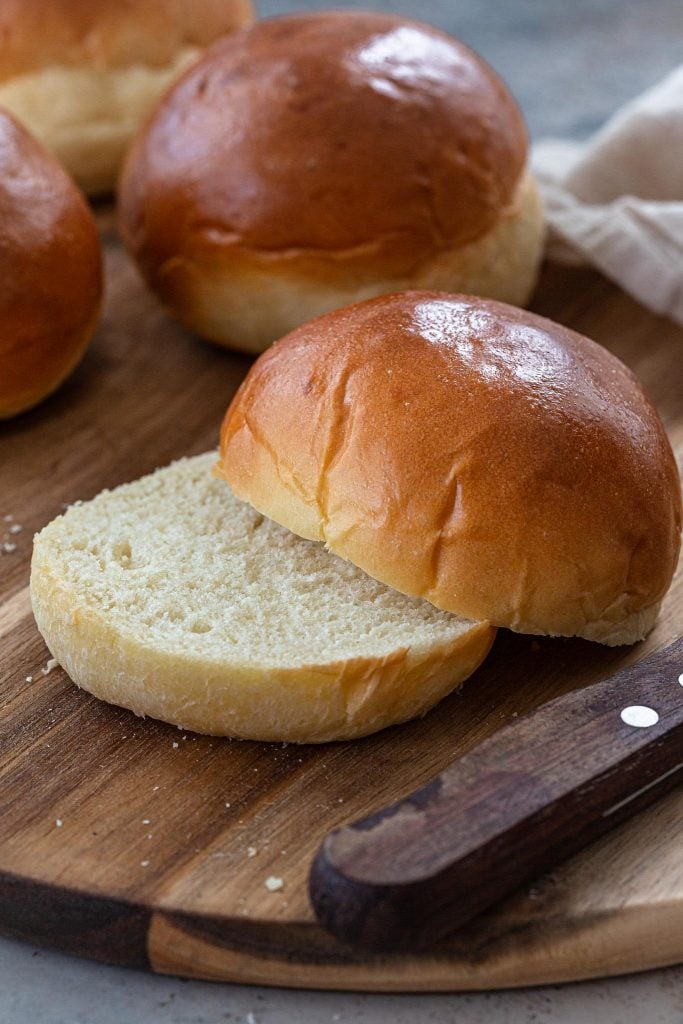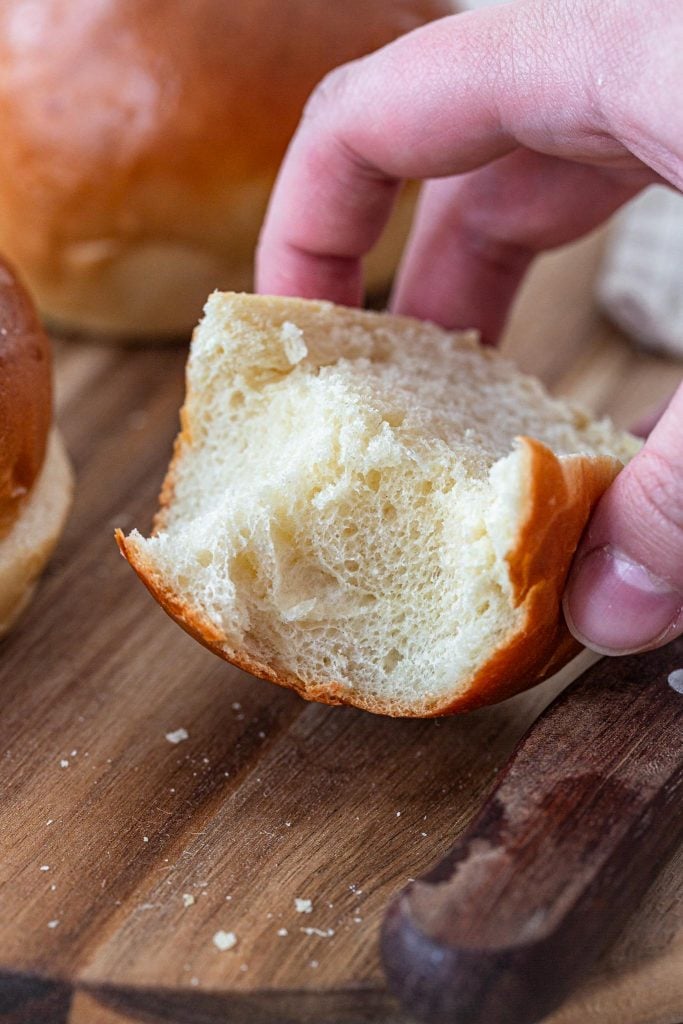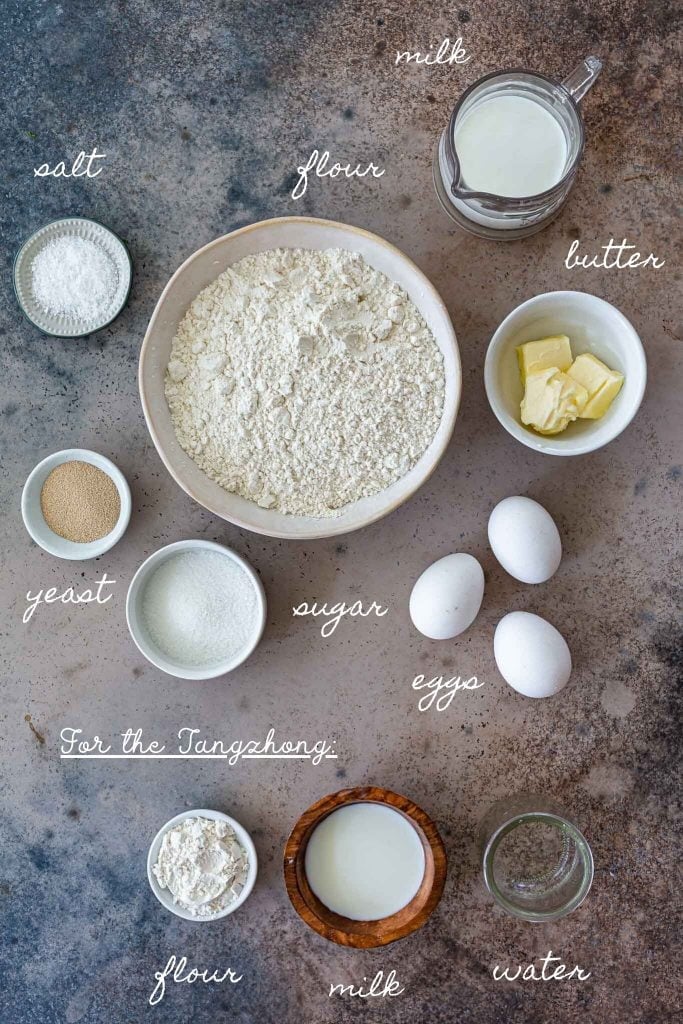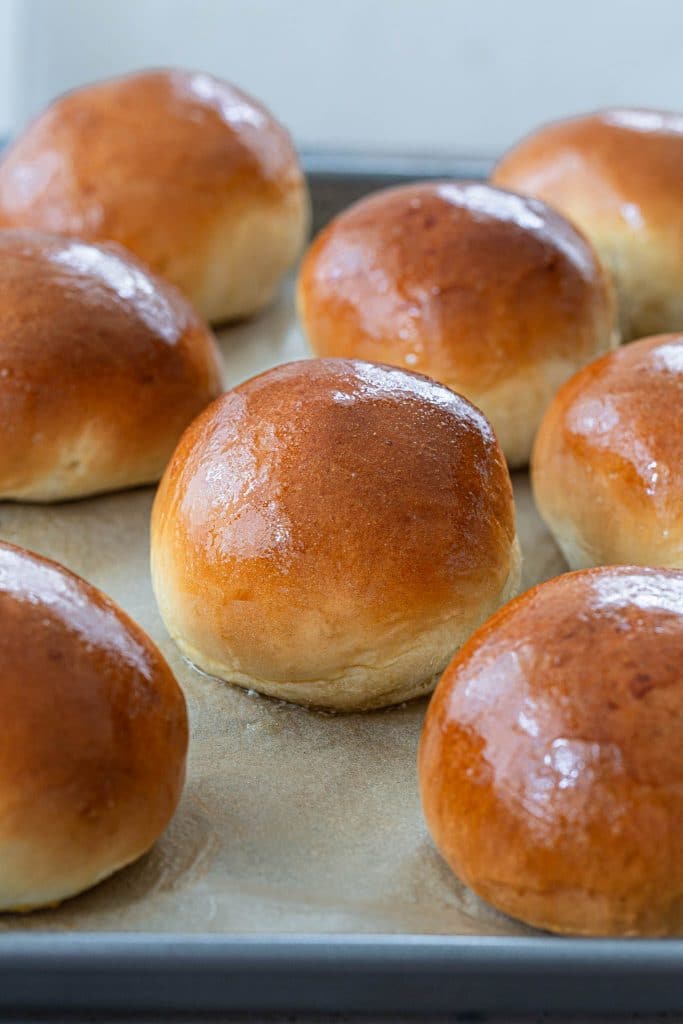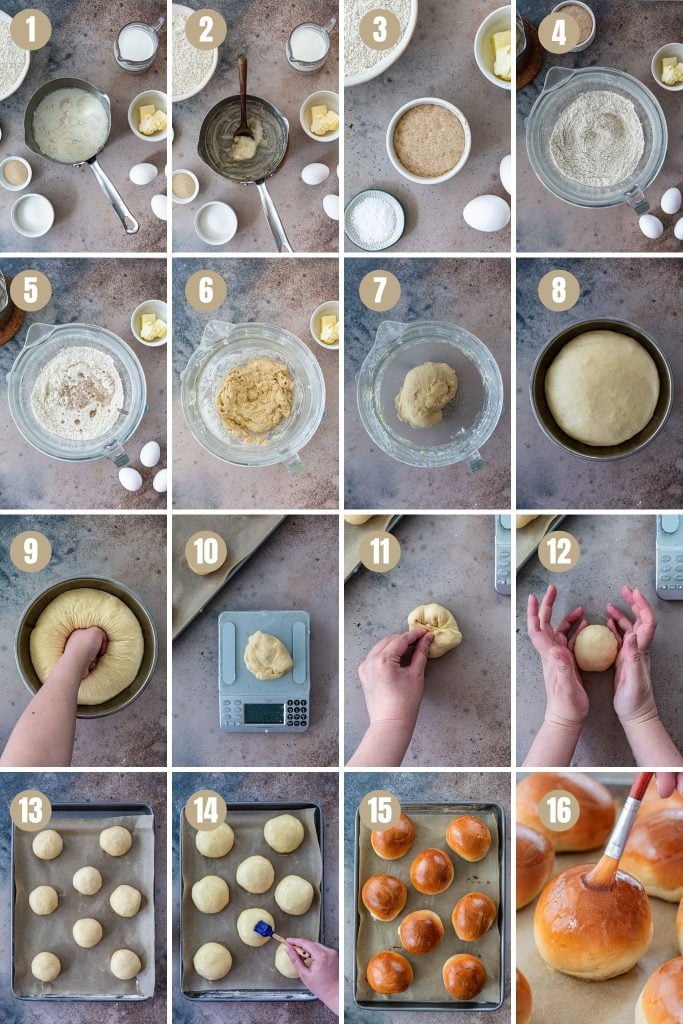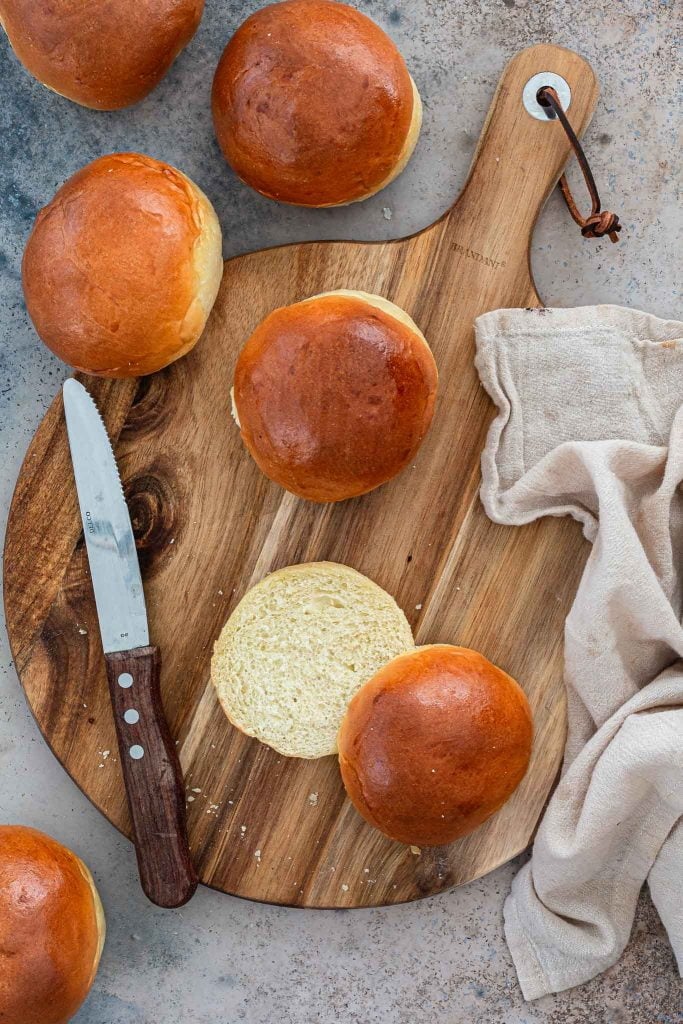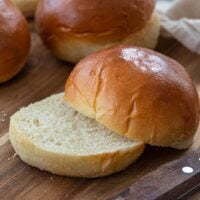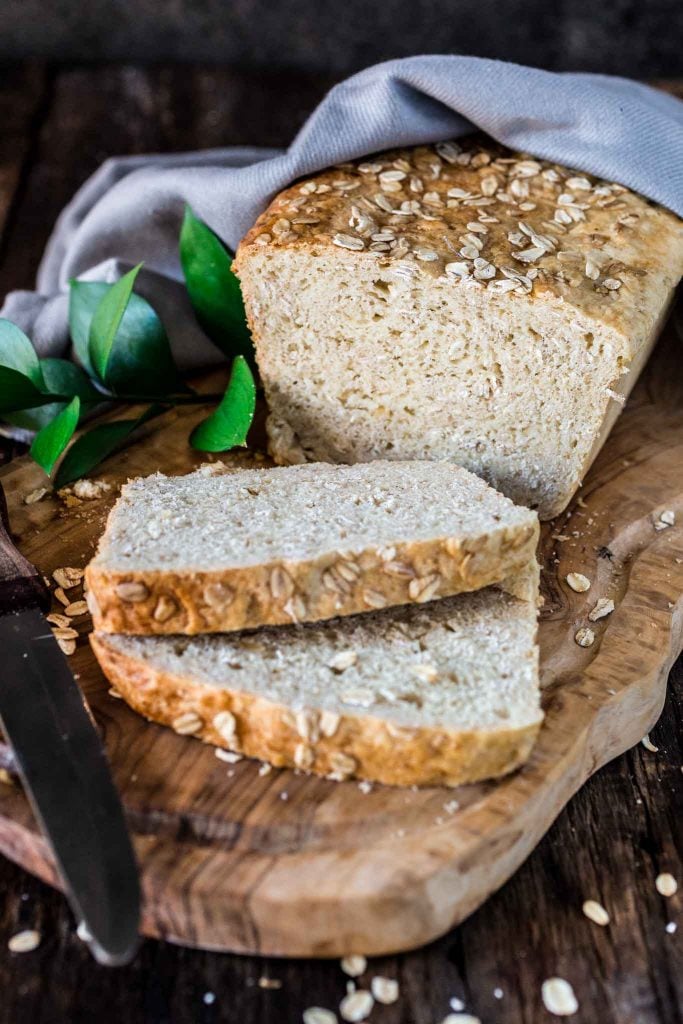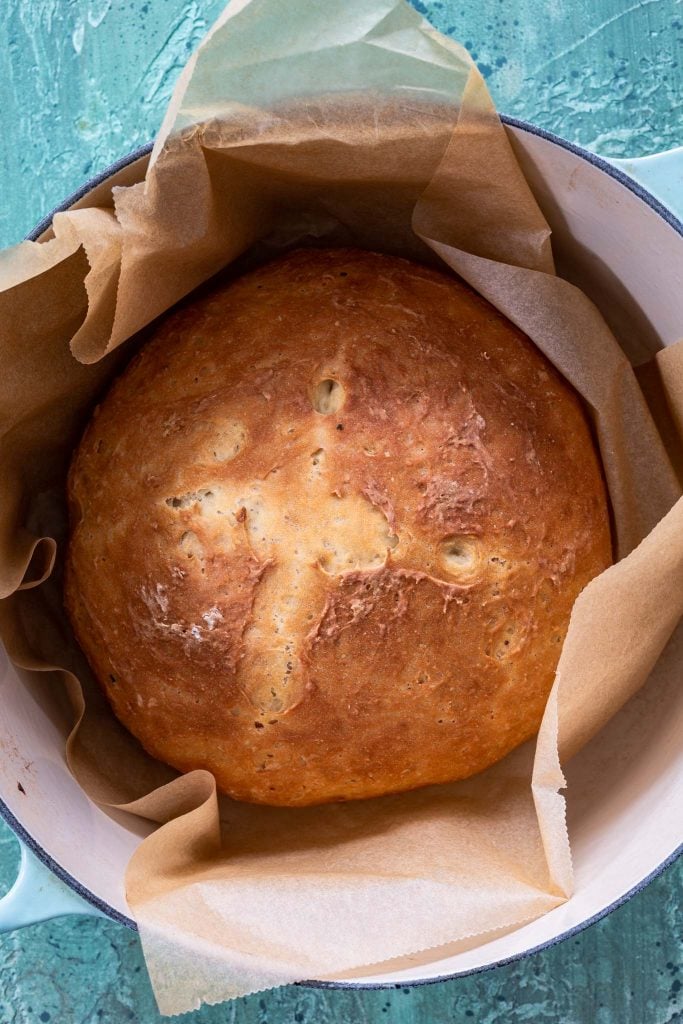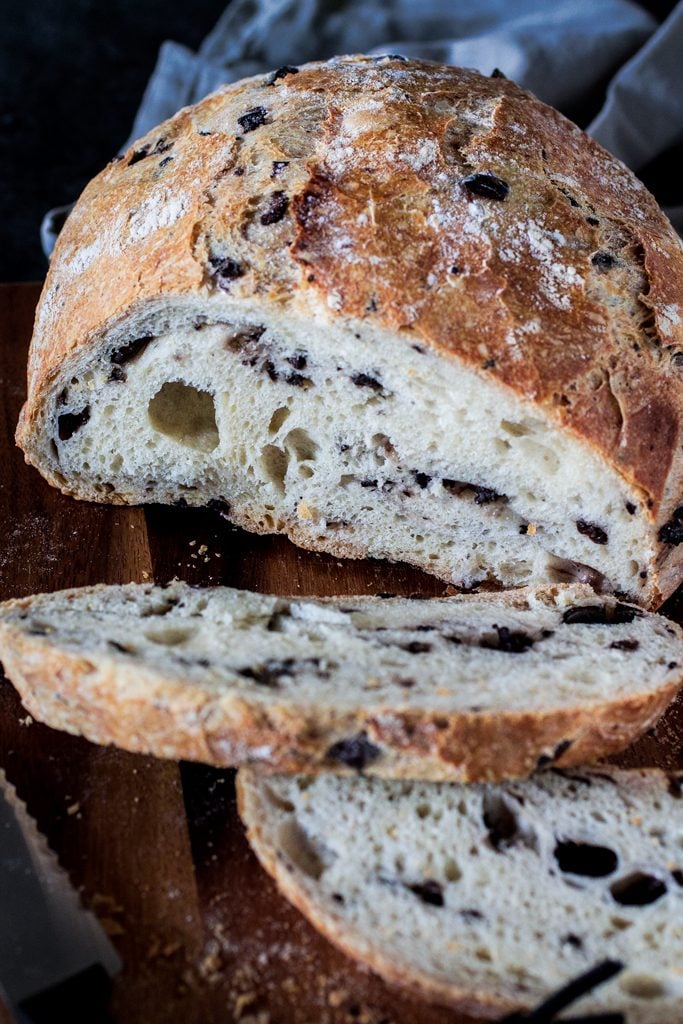Use these burger buns in your favorite burger recipes, Sloppy Joes, chicken sandwiches and even in a breakfast Bacon Egg and Cheese. Just want to enjoy them right out of the oven? They taste great with some butter and/or jam!
These are the best homemade brioche burger buns!
I think I’ve made these buns at least 3 times a week during this past month! Ever since I tried them for the first time, I vowed to never buy store-bought buns again. Yes, they’re that good! And yes, they do require some planning ahead, especially if you want to enjoy them the day they are baked, but it’s so worth it! I’d like to say that adding the tangzhong is optional, but I’d be lying. While traditional brioche doesn’t use that technique, I find that it really makes these brioche buns exceptionally soft. It is like biting into a cloud! A very delicious, buttery cloud.
In this post, you will learn:
What is brioche and what is the tangzhong method.What ingredients you will need to make the fluffiest brioche buns.How to make these buns.What toppings you can add to the buns.How to toast burger buns.Storing and freezing instructions.Recipe suggestions to use your delicious buns.
Plus a printable recipe.
What is brioche?
Brioche is a sweet French yeast bread that is enriched with butter, milk and eggs. Brioche dough can be used to make a loaf (which makes the most perfect French toast), cinnamon rolls or delicious gourmet buns. The high fat and protein contents in this dough give the bread a rich and tender crumb, buttery taste and a beautiful golden crust.
What is Tangzhong?
Tangzhong is a Chinese technique for softer, fluffier yeast bread, buns and rolls. It involves briefly cooking a small portion of the flour with liquid, making a thick slurry that will be added to the dough later. By precooking some of the flour, the starches pre-gelatinize and more moisture is trapped within the gluten strands, meaning they can absorb more water. So the addition of tangzhong increases the amount of liquid that the dough is able to absorb throughout the kneading, baking and cooling processes, giving our buns a softer and moister texture. The tangzhong method also helps the brioche buns rise higher, since the dough is able to retain more liquid and that liquid will create internal steam while they bake.
Ingredients for Brioche Buns
FLOUR – While you can make this recipe with all-purpose flour, I highly recommend using bread flour instead. It has a higher protein content, which increases the gluten elasticity, giving these soft buns some chewiness as well as an extra lift which makes them tall and plump when baked. YEAST – I use active dry yeast, which requires proofing before being mixed with the other ingredients. If using instant yeast, which doesn’t have to be proofed, you can mix it straight into the dry ingredients. They can be used interchangeably. MILK – I recommend using whole milk. The higher fat content from full-fat milk helps tenderize and moisturize the dough, resulting in a finer, moister crumb in the baked buns. BUTTER – Butter is what makes brioche so special, so splurge on the good stuff. European butter, like Président, Plugra or Kerrygold, is what I usually use. EGGS – We are using 1 whole egg and 1 egg yolk for richness. Eggs help bread dough rise since they act as a leavening agent. They also help lighten the texture and make the crumb more tender. SUGAR – A little sugar not only adds the slight sweetness that is characteristic of brioche bread, but also helps to make the buns softer, speeds the rising time (because yeast loves sugar) and aids in the browning of the buns. SALT – Don’t skip the salt! It helps bring out the flavors from the other ingredients while also adding strength to the dough, helping it hold on to the carbon dioxide gas that forms during fermentation, resulting in good volume.
How to make brioche buns recipe
Because of its high fat content, brioche dough tends to be very wet and sticky, so it is best kneaded with the aid of a stand mixer. If you want to knead it by hand, Richard Bertinet has a great video demonstration of his method, included on the DVD that comes with his book ‘Crust‘. Time wise, you should plan at least 3 hours for this recipe, as brioche needs to proof twice. If you wish to start one day and finish the other, after the dough has risen for the first time and doubled in size, you can retard it overnight in the fridge. The next morning, form the buns and let them rise again at room temperature for one hour before baking.
A few tips:
Make sure your butter is softened and your eggs are at room temperature before starting. I like to mix the dough with the paddle attachment and then switch to the dough hook before adding the butter and kneading. You will have to stop the mixer every now and then to scrape the sides with a spatula. Don’t attempt to do that with the mixer running! (Ask me how I know…)Add your butter slowly, one tablespoon at a time and waiting until it is fully incorporated before adding the next. The ideal temperature for dough rising is 75-78°F. You can use a bread proofer or place your dough in the oven (turned off) with the light on.For even sized buns, use a kitchen scale to measure the dough.For slightly smaller slider size buns, divide the dough into 12 pieces instead of 8. They will bake for less time too.
Recommended equipment and tools: Stand mixer, saucepan, kitchen scale, large baking sheet, parchment paper, kitchen brush. Here’s how I make this brioche buns recipe. As always, you will find the printable (and more complete) version of the recipe at the end of this post!
Step 1: Make the tangzhong
Combine the tangzhong ingredients in a saucepan (Photo 1), over medium heat. Cook, whisking or stirring constantly, until it thickens into a slurry. (Photo 2)Remove from heat and let it cool to room temperature.
Step 2: Proof the yeast
Mix the lukewarm milk, active dry yeast and sugar in a small bowl. Cover with a kitchen towel and let it proof for 5 to 10 minutes, or until nice and bubbly. (Photo 3)
Step 3: Mix the dough, knead and rise
Whisk the flour and salt in the bowl of your stand mixer. (Photo 4)Start mixing in the stand mixer, on low speed, and add the reserved yeast mixture. (Photo 5)Once it’s incorporated, add the reserved tangzhong and the eggs. Continue mixing until a shaggy dough forms. (Photo 6)Switch to the dough hook and add the butter, one tablespoon at a time. Once all incorporated, knead the dough for 8 to 10 minutes or until smooth and shiny. (Photo 7) The dough will be very soft, that’s normal.Form the dough into a ball and place it in a greased bowl. Cover and let it rise at a warm spot for 1 to 2 hours, or until doubled in size. (Photo 8) If you wish, you can then retard the dough in the fridge overnight.
Step 4: Shape the buns and rise again
Once the dough has doubled in size, gently punch it to deflate it. (Photo 9) Punching the dough down removes some of the gas bubbles that formed during rising and produces a finer grain.Divide the dough into 8 pieces, about 95g each. (Photo 10) Shape the dough portions into balls (Photos 11 and 12)Place the balls on a parchment paper-lined baking sheet, making sure they have space to double in size. Cover and let them rise in a warm spot for about one hour, or until puffy. (Photo 13)
Step 5: Bake
Brush the buns with egg wash. (Photo 14) Here’s where you can add toppings, like seeds or flaky salt.Bake them at 375 degrees F for 15 to 18 minutes or until golden brown. (Photo 15)Remove from the oven and brush them with melted butter. (Photo 16)Let them cool completely before eating.
Optional toppings for brioche buns
These buns are delicious just as they are, but you can top them with seeds or salt if you want to customize them! Here are some suggestions:
Sesame seeds Poppy seeds Flaky salt Freshly ground pepper Everything Bagel seasoning Oats Flax seeds
Note: If adding these toppings, sprinkle them on the buns after brushing with the egg wash.
How to toast burger buns
Toasting these buns adds some texture to your sandwiches. There are a few ways to get your buns nice and toasty, ready to be enjoyed in your burger or sandwich recipe. GRILL THEM: If you are grilling burgers, go ahead and place the buns on the grill, cut side down, until slightly charred, about 1 minute. Spreading with butter or mayo keeps them from sticking to the grill. TOAST THEM IN A CAST IRON SKILLET: I love using a cast iron for making burgers and they are great for toasting the buns as well. I like to spread the burger buns with a little butter and then place them – cut side down – on the cast iron, until golden brown, about 1 minute. You can also use a regular skillet or griddle. BAKE THEM: You can toast the buns in the oven or toaster oven, at 350 degrees F, for 5 minutes or until slightly crispy. PLACE THEM UNDER THE BROILER: Place the buns on a baking sheet, cut side up, and slip them under the broiler for about 30 seconds or until golden brown. TOAST THEM IN AN AIR FRYER: Preheat the air fryer to 350 degrees F. Place the buns in the air fryer compartment and air fry them for about 3 minutes or until crispy.
How Long Do Homemade Hamburger Buns Last?
I find that these brioche buns are best eaten the day there were baked, but if properly stored, they will keep for up to 3 days at room temperature. I recommend storing the cooled buns in a ziploc bag (removing as much as the air as you can) or wrapped tightly so they don’t lose too much moisture. Do not refrigerate them. Bread stored in the fridge dries out and gets stale much faster than the ones kept at room temperature! If not consuming freshly baked, I strongly suggest toasting them for best results.
Can I freeze brioche buns?
Yes, for longer-term storage, you should freeze them. They will keep at best quality for up to 3 months. Before freezing, make sure the hamburger buns are completely cool, otherwise condensation will form and will lead to freezer burn. Once they are at room temperature, wrap them individually in foil or plastic wrap and place them in a single layer on a baking sheet. Freeze until solid and then transfer them, still wrapped, to a freezer bag.
Thawing the buns
You can thaw the brioche buns on the counter or in the oven. To thaw on the counter, keep them in their wrap and let them defrost for 1 to 2 hours. You can then enjoy or re-warm – wrapped in foil – in a 300 degrees F oven for about 10 minutes. To defrost in the oven, preheat your oven to 350 degrees F, remove the buns from the freezer and from their packaging and place them on a baking sheet. Place the sheet in the hot oven and bake for 30 to 40 minutes or until they are warm.
Recipes to make with these buns
Here are a few recipes where you can use homemade brioche buns:
Blue Cheese BurgerX-Tudo (Brazilian Epic Burger)Apple, Bacon and Brie BurgerSriracha Turkey BurgerJuicy Lucy BurgerFried Chicken SandwichNew York Bacon, Egg and Cheese
Did you make this recipe? I love hearing from you! Please comment and leave a 5-star rating below. You can also take a photo and tag me on Instagram with #oliviascuisine.
If you like this brioche buns recipe, you’ll also like:
